[Eng] OOTFest25 (UN)SEEN: Vision, Dialogue, Experimentation and Paradoxes
- momoko91
- 1 day ago
- 7 min read
Updated: 8 hours ago
Text: Chan Chi Fan, Elspeth

OOTFest25 (UN)SEEN is a live-hybrid festival gathering artists and creative technologists to explore embodiment/movement and digital presence through XR (Extended Reality), MR (Mixed Reality), AI, andmachine learning. Held from June 5 - 8 at Riverside Studios in London and online via Open Online Theatre (OOT), the festival is conceived as a site for radical experimentation and dialogue at the intersection of embodiment, technology, and artistic innovation. It features live-hybrid performances, immersive installations, panel discussions, workshops, and an Innovation Lab focused on AI in the arts.
Vision: Holding Space for the Unseen
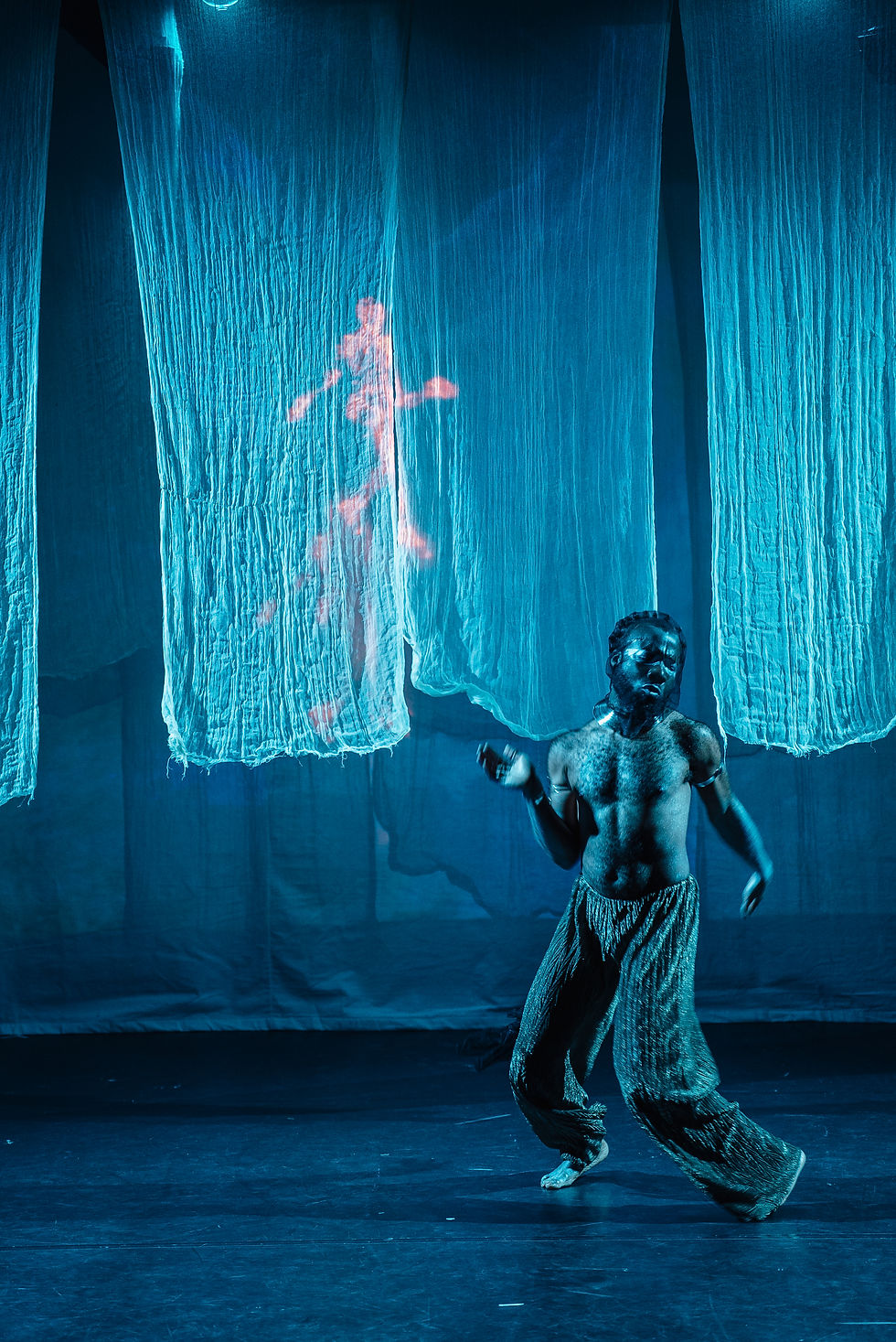
Beginning as an OOT initiative during the pandemic, the festival aims to support under-represented artists by providing residencies, mentorship and technological training, while encouraging creative risk-taking. Joumana Murad, artistic director of IJAD Dance Company (IJAD) explained that the festival’s theme, “Unseen”,was inspired by glitches — moments when hidden structures or overlooked voices emerge. Mourad has introduced the concept of “Sensography”, focusing on cross-platform creation and the integration of digital and live performance, ensuring inclusivity and accessibility so every audience member has a unique experience. She sees technology as both a bridge connecting past and present, and as nurturing a “latent space[1]” for new collaborations and meaning, with particular attention to ethics and inclusivity in the arts.
The Festival at a Glance
There were three panel discussions, the first exploring how wearables and digital embodiment can transform sensation and intimacy, while also broadening conversations around environmental justice and identity. The second panel focused on unpredictability and ethics in AI, likening digital co-creation to structured improvisation and raising questions about agency and responsibility. The third addressed accessibility and care, and how participatory art could challenge the traditional proscenium stage. Across three interactive installations and six diverse performances, artists explored ancestral and ritual themes, transformation, identity and the “unseen”, inviting audiences to experience the festival’s ethos through immersion and participation.
AI Innovative Lab: 4Es (Ethics, Epistemology, Economics and Environment) of AI
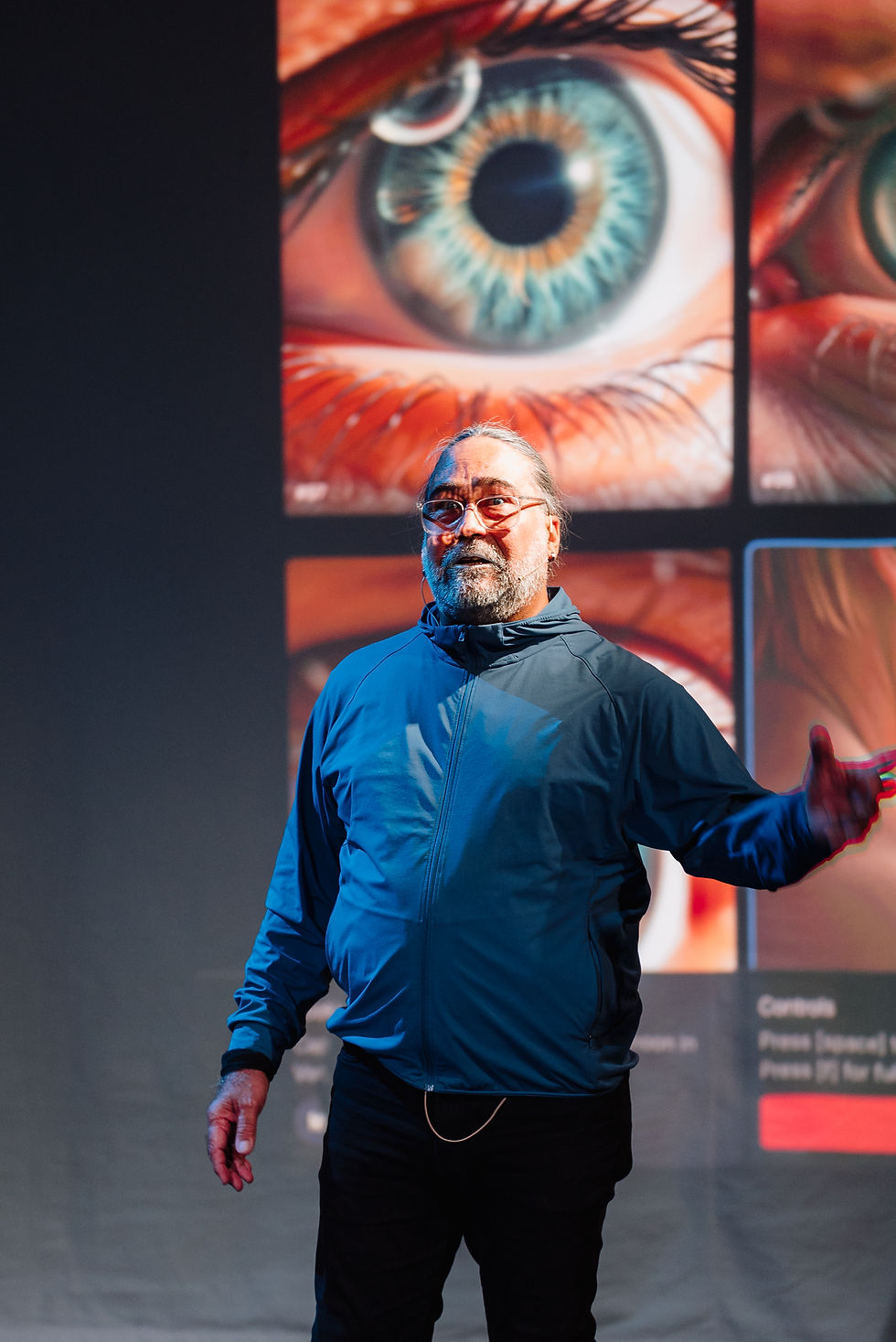
The AI Innovative Lab at OOTFest25 was a full-day event dedicated to hands-on experimentation, critical dialogue, and creative inquiry at the intersection of AI and the arts, based on the 4Es when using AI. Bringing together artists, technologists, and thinkers including Dr Oonagh Murphy, Sarah Campbell, Jocelyn Burnham, Marlon Barrios Solano, Professor Helen Kennedy and IJAD, the Lab provided a platform to explore the subtleties, risks, and potentialities of AI in artistic practice.

Play, Subtlety, and Democratization
The day began with the discussion of artists’ roles in challenging AI while employing it in the context of arts and culture strategy. Participants were then invited to create their own games using AI, discovering both the fun and the strangeness of working with generative systems. The discussion then turned to the cultural and decolonial aspects of AI, particularly the dominance of English-language prompts and the need for democratization of AI literacy. Questions about the dichotomy of body and mind concerning AI were raised, noting that the data and prompts are mostly cognitive inputs. Since lived and embodied experiences cannot be fully captured by digital technology, they remain uniquely precious. Embodiment shapes our understanding and comprehension of the world, enriching the lexicon on movement and sensation, and eventually informing the AI prompts we create.
A key moment involved the analysis of an AI chatbot’s interaction with a young person seemingly troubled over issues of self-image. The conversation with the chatbot raised concerns about the superficiality, homogeneity and potential mental health risks of AI-mediated care, as well as problems of accessibility of conventional therapy and collective care. Turning to the case study of Moxie robot [2], the group discussed the importance of social responsibility, alongside the potentially devastating impact of integrating AI into health sectors. Examining Moxie made me reflect on the balance required when using AI in well-being. For example, at a social prescribing event, I learned about Kenji Health [3], an AI-powered platform that keeps participants engaged between sessions and reduces dropout rates by offering real-time insights and personalized motivation.
*Social prescribing: Social prescribing is a person-centred approach, and it will look different for everyone. A socially prescribed cultural activity could be taking a dance class, going to a gallery, joining a choir or singing group…etc.
Questions to Ponder :
How can we democratize AI literacy and ensure diverse voices are represented in AI development?
What are the ethical implications of introducing/using AI in the care and therapy sector, especially for vulnerable populations?
How do we balance the potential benefits of AI with the risks of superficiality and homogenization when interacting with humans?
Embodied Prompts and Generativity
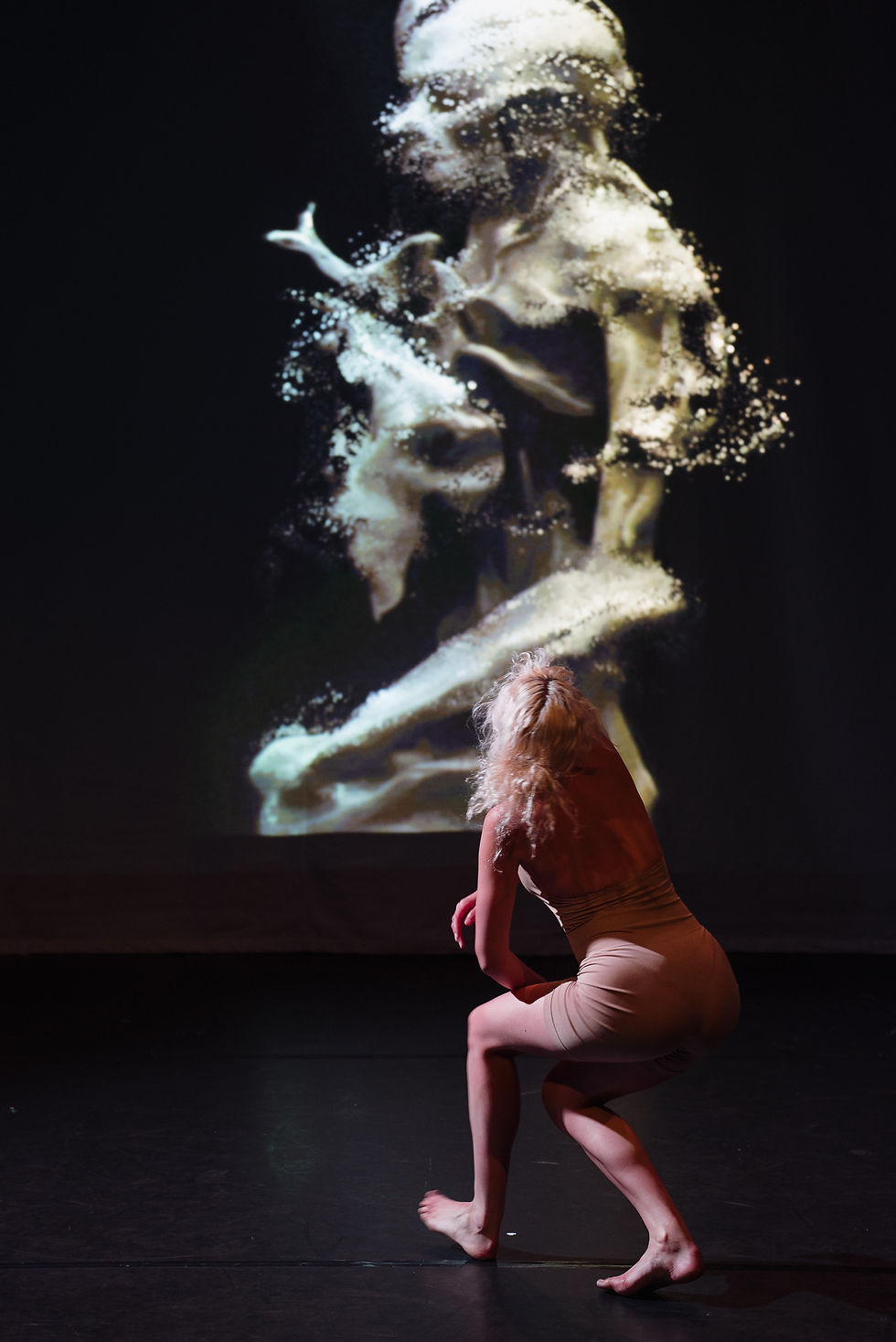
Marlon Barrios Solano led participants through a lecture-demonstration [4], starting with prompts inspired by Trisha Brown’s Accumulation (1971) and Yoko Ono’s Painting to Hammer a Nail (1961) to explore the generative potential of human bodies (ongoing metabolism even in stillness), highly designed public spaces (for instance a Starbucks coffee shop) and AI systems. Through exploring various softwares and generative AI, he invited participants to be nested in storytelling and algorithmic improvisation.
The second half was a workshop that emphasized the importance of self-organization, chance, and mindful observation — qualities that parallel both the choreographic and algorithmic processes. Participants were invited to treat the theatre space as a “latent space”, following or resisting human and/or AI-generated prompts, and considering computers running AI applications as creative entities in their own right.
The session highlighted both the paradoxes and possibilities of working with AI: while the technology can generate new forms and experiences, it still relies on human intervention and playfulness to create a gestalt choreography, transforming the virtual/imaginal ‘latent space’ into a meaningful and relational context.
Questions to Ponder:
How can we keep embodiment as the central prompt or even provocation in AI-driven artistic practice?
In what ways can AI be seen as a collaborator rather than just a tool?
What new lexicons and forms might emerge when we allow self-organization and chance to guide our creative processes?
Reflexive Practice and Critical Questions
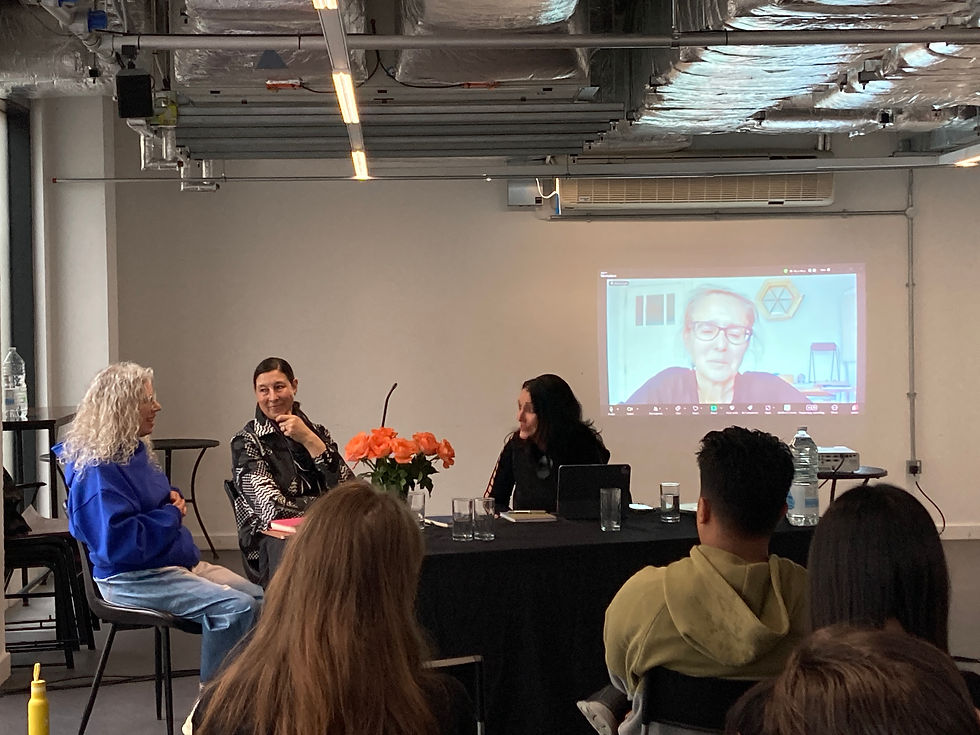
The final part of the Lab was a reflective session, where participants shared what provoked or moved them, and what tensions or contradictions remained unresolved.
Their feedback highlighted:
the need for greater agency in working with AI;
enquiries from “how can a digital avatar be motivated to move if it is reluctant” to the pressing urge “that we need to change arts to thrive, people need to survive first”;
the importance of developing ecosystems that empower artists and institutions;
the risks of losing process in favour of efficiency and convenience.
Paradoxically, I observed participants deeply engaged in the process of game creation. The experience was playful and immediate as a new game could emerge in an instant. Yet, making it truly enjoyable often required us to refine and adapt the AI prompts. I noticed some participants even copied error messages back into the system to recalibrate the algorithms, highlighting a curious cycle of trial and error. Ultimately, it was our collective curiosity that kept drawing us back into this exploratory process.
The session concluded with small groups exchanging what each could offer one another. Amidst a swirl of thoughts, I received the simple gifts of a hand massage and a warm embrace. This gentle closure underscored the importance of honouring the body as a privileged site of sensation and meaning-making, reminding us to approach AI not with apprehension but with curiosity and thoughtful engagement.
Questions to Ponder:
How do we build algorithms, funding models and ecosystems that serve the creative needs of artists, rather than corporations?
What is lost when we prioritize convenience and efficiency over process and experimentation?
What is gained when we treasure the uncanny experiences of using AI: an invitation to change or subvert something that we may take for granted?
How can we maintain a mindful, holistic, embodied approach to art-making in an increasingly digital world?
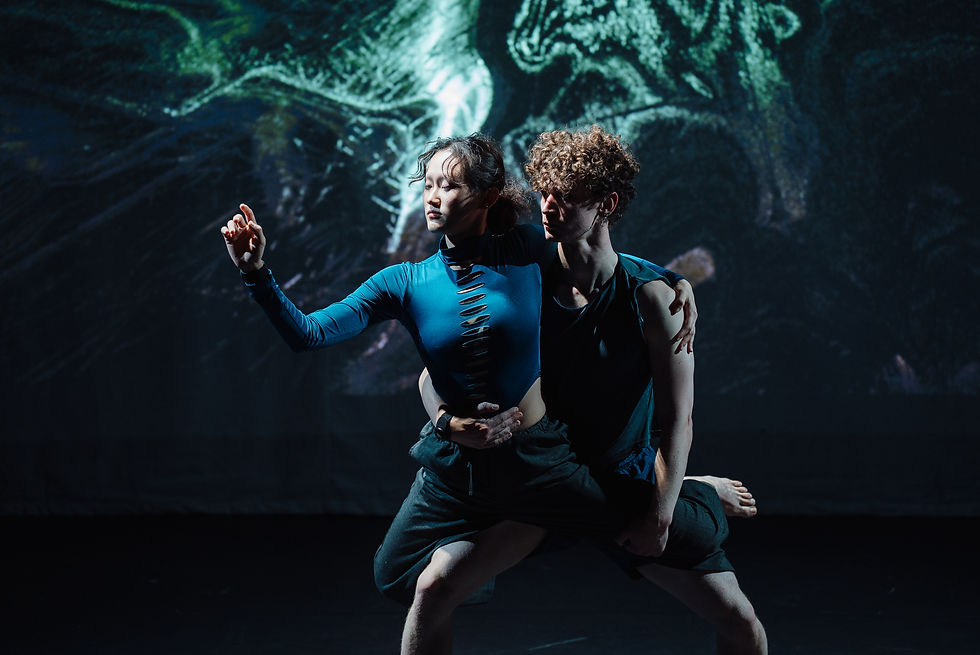
Final thoughts:
The AI Lab at OOTFest25 became a crucible for experimentation and critical reflection on the evolving role of AI in the arts. By focusing on embodiment, ethics, and agency, the Lab encouraged participants to treat AI not just as a tool but as a creative collaborator, while remaining alert to the complexities and contradictions of digital innovation.
As we move forward, urgent questions arise: How do we ensure AI serves human values rather than outpacing them? Can creative uses of AI help reimagine social constructs and challenge forces like consumerism, extractivism, and techno-capitalism, especially as the arts remain a rare space for such radical exploration?
At the same time, we must acknowledge the environmental impact — every AI interaction consumes resources, prompting a need for balance between technological advancement and sustainability. Perhaps the greatest potential lies in integrating AI more deeply into the research and development phases of artistic practice, rather than focusing solely on outcomes. In this way, art can remain a vital site for critical inquiry, social transformation, and ecological awareness.
======
Chan Chi Fan, Elspeth
Graduating with a degree in Cinema & TV from Hong Kong Baptist University, Chan pursued her passion for dance in the UK, earning a Master's degree in Dance Research (distinction) and receiving the Valerie Briginshaw Prize 2024 for dance writing and academic excellence. Her writings have been featured in various publications, including the dance journal/hk, International Association of Theatre Critics (Hong Kong), Hong Kong Literary Criticism Society and Dance News.
The philosophical and therapeutic dimensions of Butoh form the foundation of Chan’s research. She presented in various academic conferences at the University of London (April 2024), Global Dance Conference (August 2024) and recently at the 11th Annual Conference of the School of Performing Arts at the University of Malta (March 2025). She also delivered her first butoh workshop “Embody the Invisible” at Goldsmith University, London in May 2024.
Chan managed educational, training, and outreach programmes as Project Manager for the Hong Kong Dance Federation. In 2019, she took on the role of research and coordination for the lecture series "3 Decades of Dance in Hong Kong", organised by the Leisure and Cultural Services Department and curated by Dr. Lo Wai-luk. She also worked as the producer of “The Hollowed Man 2.0” in 2021; and moderated the pre-performance talk “Butoh and the Locality of the Body - An Initial Exploration of Butoh in Hong Kong” in 2023.
In early 2025, Chan co-founded Dive(rse) Dance with Janejira Matthews. Dive(rse) Dance is a new online dance magazine focussed on writing about lesser known dance forms in and connected to the UK. By providing a lens to diversify the perception of dance, the magazine aims to raise discussions on dance/embodiment as an intellectual subject in an accessible and friendly manner. (https://www.dive-dance.com/)
Notes
[1] In machine learning, a latent space is a compressed, abstract representation of data within a lower-dimensional space.
[2] Moxie claims to be the world’s most advanced robot that uses safe AI to boost kids' learning and emotional development, but it was discontinued at the end of 2024. (https://moxierobot.com/)
[3] Kenji Health: https://kenji.health/.
[4] Marlon’s lecture-demonstration with interactive games: https://marlonbarrios.github.io/born_in_latent_space/.




![[Eng] Crossing Realities: From Code to Choreography](https://static.wixstatic.com/media/f99599_442c4d73c4d24d898b5bf8fb52dd1827~mv2.jpg/v1/fill/w_980,h_551,al_c,q_85,usm_0.66_1.00_0.01,enc_avif,quality_auto/f99599_442c4d73c4d24d898b5bf8fb52dd1827~mv2.jpg)
![[中]《 街舞劇場試煉場》—— 記 【街舞劇場發展計劃2024-2025】The Box 6.0](https://static.wixstatic.com/media/f99599_316817aceb79487a9eb020524852d637~mv2.jpg/v1/fill/w_980,h_551,al_c,q_85,usm_0.66_1.00_0.01,enc_avif,quality_auto/f99599_316817aceb79487a9eb020524852d637~mv2.jpg)
![[中] 舞影山海—— 與藍嘉穎談舞蹈影像創作](https://static.wixstatic.com/media/f99599_f7c50a29186e41bc8748755970cb2f9d~mv2.jpg/v1/fill/w_980,h_551,al_c,q_85,usm_0.66_1.00_0.01,enc_avif,quality_auto/f99599_f7c50a29186e41bc8748755970cb2f9d~mv2.jpg)

Comments